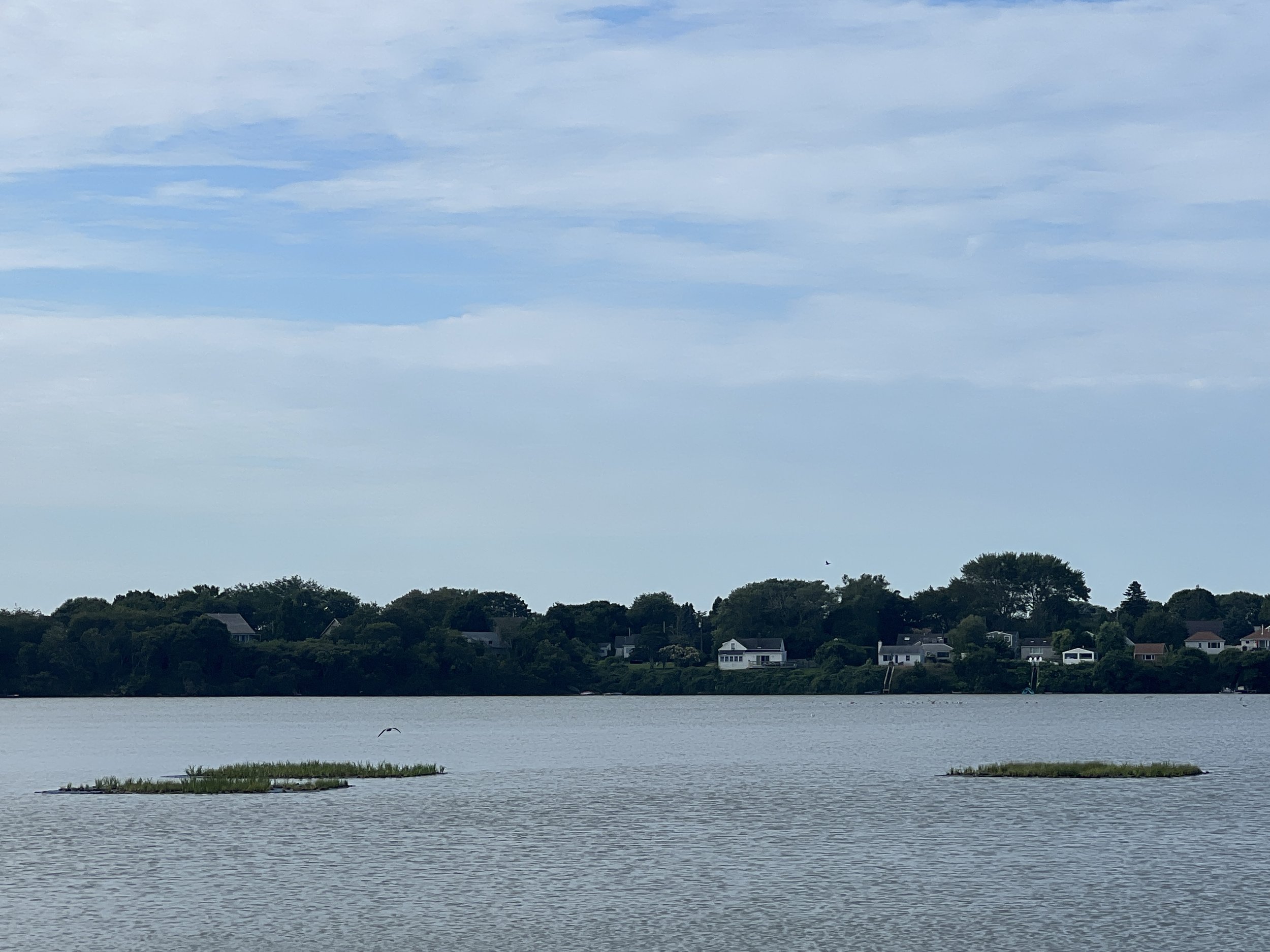Fort Pond (a closed body of water) is contaminated, and unsafe for recreation.
Our beautiful pond is facing significant challenges due to aging septic systems, cesspools, and over a dozen stormwater drains that funnel contaminants into it.
For several years, CCOM has received $25k in grant funding but has allocated it to a Floating Wetland project without concrete data on its effectiveness.
It's time to reconsider the CCOM floating wetlands project and redirect these funds toward a more pressing issue: stormwater remediation using Bioswales.
This initiative involves multiple government entities, including the Town of East Hampton, Suffolk County, and New York State, each with jurisdiction over various roads and areas. By installing Bioswales and implementing diversion techniques on the stormwater drains, we can significantly improve the water quality of Fort Pond.
We strongly urge the Town Board's Natural Resources Department to take the lead on this essential project, which will have a lasting positive impact on our community and environment.
What you can do.
Restaurants and commercial businesses in this Harbor Protection Overlay District
We urge you, as a significant contributor to this contamination issue, to actively engage in finding solutions. Taking responsibility and working together to address this problem is essential for the long-term health and sustainability of our community and environment.
Consider upgrading their large capacity cesspools and septic systems by utilizing available grant funds from the Town of East Hampton and Suffolk County. These grants offer tax-free financial assistance that can help offset the expenses associated with system upgrades.
To further reduce the discharge of greywater into Fort Pond, a shift towards eco-friendly, disposable, and compostable tableware should be initiated promptly and maintained until the necessary system upgrades are completed.
For additional information and access to the Grants relevant forms, please visit Learn More about the Grants | Grant Forms. This proactive approach will contribute significantly to protecting and restoring the pond's water quality.
It's essential to prioritize regular pump-outs as needed. A recommended minimum schedule for maintenance is annually.
Refrain from using fertilizer, pesticides, and toxic chemicals. Consider environmentally safe products.
We would also like to commend restaurants that have successfully upgraded to low-nitrogen systems with our Montauker 5-star clean watermark. Mavericks has achieved a high rating of 💧💧💧💧💧 by upgrading to a low nitrogen system. We look forward to seeing more establishments join this list in the future.
Residents in this Harbor Protection Overlay District
We strongly urge those inadvertently contributing to contamination to actively participate in finding and implementing solutions. Each of us has a vital role in environmental protection, and through responsible actions, we can collectively enhance our community's health and sustainability.
Because many homes around Fort Pond predate conventional septic systems and may still have cesspools that leach contaminants into the pond, it's crucial for all such residents to utilize the available grant funds from the Town of East Hampton and Suffolk County. These grants are tax-free and are designed to cover the full cost of septic system upgrades.
By upgrading your septic systems, you not only contribute to the well-being of Fort Pond but also ensure the long-term health and sustainability of our beautiful community. Learn More about the Grants | Grant Forms
Fort Pond falls within a Harbor Protection Overlay District (HPOD), and it's essential to prioritize regular pump-outs as required. A recommended minimum schedule for this maintenance is annually for residental homes.
Refrain from using fertilizer, pesticides, and toxic chemicals. Consider environmentally safe products.
The Town
Through the Community Preservation Fund, the Town should persist in acquiring all available coastal properties from willing sellers. This strategy aims to restrict dune development and curb any further degradation of water quality, ultimately fostering coastal resiliency. Learn More about the CPF.
-
Fort Pond is 173 acres in size and, as such, is the second largest freshwater pond on Long Island after Lake Ronkonkoma, a kettlehole pond in western Suffolk County. (Lake Montauk was the largest freshwater body on Long Island until it was permanently opened to Block Island Sound in the mid-1920s.). Fort Pond is one of the most popular fishing ponds on Long Island and, as such, is regulated by the New York State Department of Environmental Conservation. The department has recently expressed concern that the pond is in trouble from pollution and ecological problems. Over the past several years, the pond's waters have lost clarity, the bottom vegetation has thinned, and the perimeter wetlands have been impaired by human activities and the invasion of phragmites and exotic plants, one of which is purple loosestrife. Fish populations have become stunted, resulting in the canabalization, overgrazing of zooplankters, and undergrazing of phytoplankton.
While the pond has yet to experience a full-blown phytoplankton bloom, causing the water to discolor through the pond, it has experienced several localized blooms. The small extension of Fort Pond to the northeast, “Little Fort Pond,” does experience regular algae blooms: these frequently make the water so turbid that it is almost opaque. Such blooms are indicative of too much nutrition and too little phytoplankton grazing; the situation in Little Fort Pond could easily translate to the situation in Fort Pond proper unless aggressive steps are taken to preclude it.
Fort Pond was formed ca. 15,000 years ago in the aftermath of the final retreat of the Wisconsin glaciation from the Montauk Peninsula. The basin has the appearance of a meltwater lagoon that was gouged out by runoff from the departing ice sheet's melting and, subsequently, from the melting of the glacier that created the Harbor Hills moraine on the north side of Long Island. It is postulated that for a time after glaciation, Fort Pond may have served as a channel between Fort Pond Bay and the Atlantic Ocean (just as it is postulated that Lake Montauk was also a waterway connecting Block Island Sound with the ocean)…



